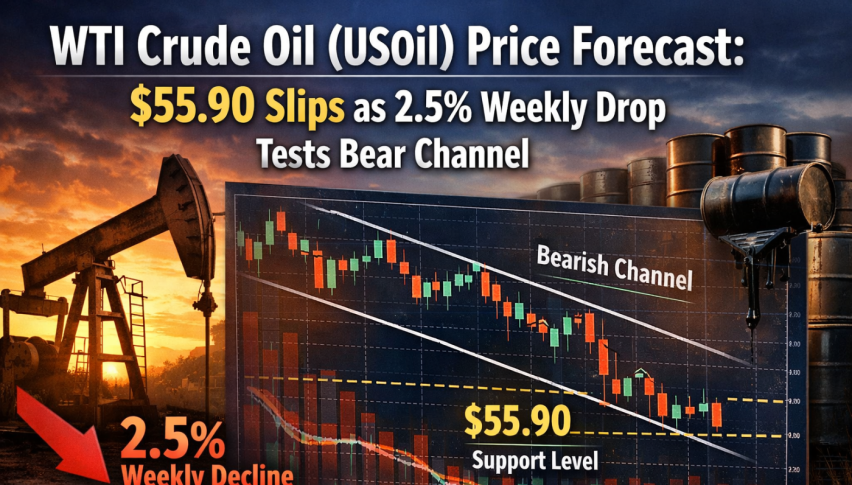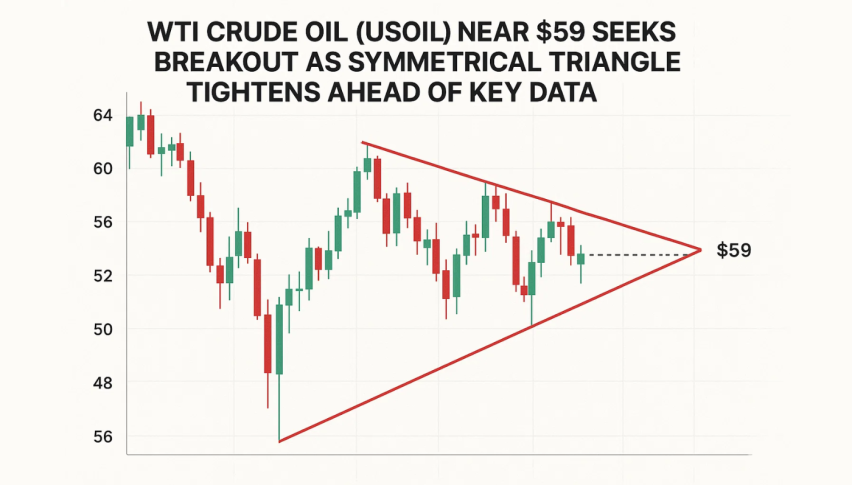WTI Forecast: US Strikes Send Oil Prices Above $75, Diplomacy Can Reverse Below $60
As concerns about broader regional instability were heightened by the renewed war between Iran and Israel, oil markets saw a sharp increase.

Quick overview
- Oil markets experienced a surge in June due to escalating tensions between Iran and Israel, raising fears of broader regional instability.
- Israeli airstrikes on Iranian military targets triggered a significant shift in market sentiment, leading to a sharp increase in crude oil prices.
- The U.S. confirmed airstrikes on Iranian sites, further heightening concerns about potential escalation in the conflict and its impact on oil supply.
- Traders remain on edge, with oil prices sensitive to geopolitical developments, as the market navigates a volatile landscape.
Live USOIL Chart
As concerns about broader regional instability were heightened by the renewed war between Iran and Israel, oil markets saw a sharp increase in June. Crude prices fell precipitously in response to the U.S. launching targeted strikes and the escalation of military exchanges, underscoring the market’s susceptibility to geopolitical risk.
Geopolitical Tensions Roil Global Oil Markets
Crude oil has entered one of its most volatile stretches in recent months, driven by rising tensions between Israel and Iran. Last Friday’s Israeli airstrikes on Iranian military infrastructure triggered a significant shift in market sentiment, turning latent concern into outright panic.
Fears of a wider regional war rattled energy traders, who were already on edge due to fragile supply-demand dynamics. The Strait of Hormuz—a vital chokepoint for nearly 20% of global oil shipments—once again became a focal point as both nations launched retaliatory attacks, including Iran’s missile strikes on Israeli targets and subsequent U.S. airstrikes on Iranian facilities.
Crude Oil Chart H4 – WTI Surges Then Cools Off
The immediate market reaction was swift. West Texas Intermediate (WTI) crude broke above its 200-day simple moving average, climbing from under $70 to nearly $77.60 per barrel. Brent crude followed suit, spiking to $78.55. Despite initial surges, some of the gains were pared back as traders reassessed risk over the weekend.
WTI Oil Chart Weekly – Buyers Face MAs
Last week, WTI oil prices briefly dipped below $70 but found strong technical support at the 200-SMA. Buyers quickly re-entered the market, pushing prices back to $75.30 by Tuesday—a 3% daily gain. The bounce signaled that bullish sentiment remained intact, particularly with the Middle East crisis still unfolding.
US Strikes Add Fuel to the Fire
The situation took a sharper turn when the United States confirmed airstrikes on three Iranian sites over the weekend. The news ignited further concern that Washington could be drawn deeper into the Iran-Israel conflict. While some analysts speculate this may be a calculated move to force diplomatic negotiations, markets are reacting to the immediate risk of escalation.
The U.S. dollar strengthened early Monday, typically a headwind for oil prices, but WTI still opened around $3 higher. The market’s attention remains fixed on developments in the Middle East, particularly any disruption to maritime oil traffic or infrastructure sabotage.
Conclusion: A Market on Edge
Oil traders are navigating a fragile landscape. With each missile launched or airstrike confirmed, the probability of a sustained rally in crude increases—especially if geopolitical risks threaten physical supply chains.
For now, the price of WTI remains sensitive to headlines. A peaceful resolution or diplomatic breakthrough could ease pressure, but until then, the oil market is poised for sharp moves in either direction.
US WTI Live Chart
- Check out our free forex signals
- Follow the top economic events on FX Leaders economic calendar
- Trade better, discover more Forex Trading Strategies
- Open a FREE Trading Account





